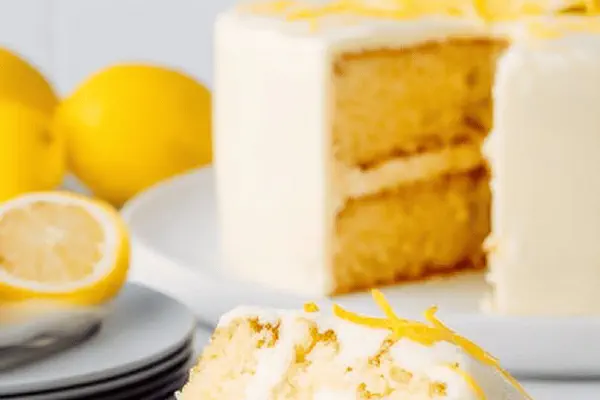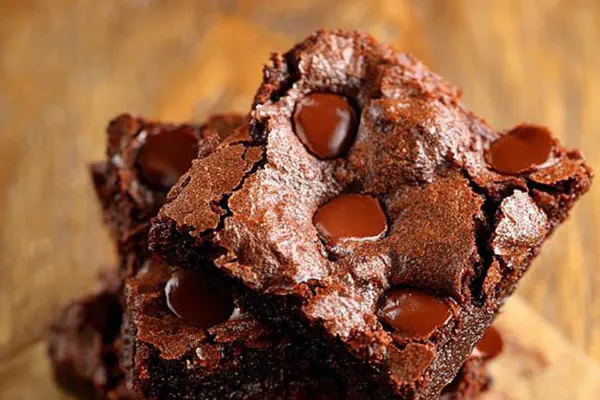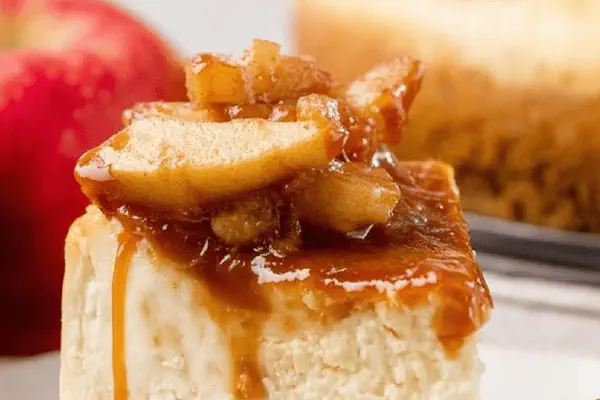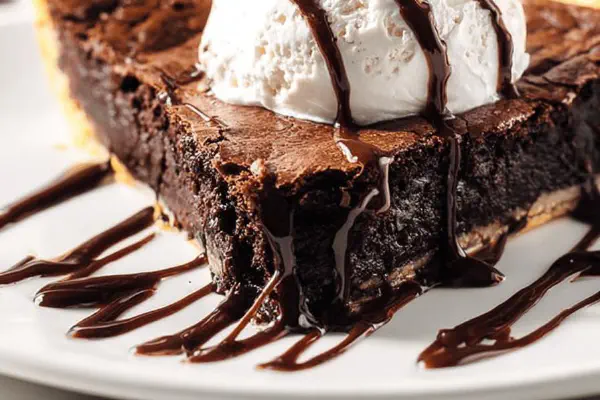Lemon Velvet Cake Remix

By Emma
Certified Culinary Professional
Ingredients
- 2 1/2 cups all-purpose flour
- 1 3/4 cups granulated sugar
- 1 tbsp baking powder
- 3/4 tsp baking soda
- 1 tsp salt
- 1/2 cup coconut oil softened (sub for butter)
- 1 whole large egg
- 3 large egg whites
- 1 cup buttermilk (room temp)
- 1/4 cup fresh lemon juice
- Zest of 1 lemon and 1 lime
- 1 tsp vanilla extract
- For Frosting:
- 8 oz cream cheese softened
- 1/2 cup mascarpone cheese softened (adds tang and stability)
- 1/2 cup unsalted butter softened
- 1 tbsp lemon juice fresh
- 1 tsp vanilla extract
- 3 1/2 cups powdered sugar sifted
About the ingredients
Method
Cake Directions
- Preheat oven to 345°F. Grease and flour two 9-inch round pans, line bottoms with parchment paper for easy release. Oven temp lowered slightly to slow bake for better crumb.
- Whisk flour, sugar, baking powder, baking soda, salt thoroughly so leaveners spread evenly. No clumps or surprise sunken centers.
- Add coconut oil to dry ingredients. Mix on low speed with electric mixer until mixture resembles coarse crumbs, tiny lumps of fat visible. Overmixing kills tenderness.
- In separate bowl, whisk egg, egg whites, buttermilk, lemon juice, lemon and lime zest, vanilla. Citrus zest size and freshness matter; bigger flakes burst more oils.
- Slowly pour wet mixture into dry. Mix medium speed just until blended; small streaks of flour okay but no lumps visible. Overmix develops gluten, makes cake dense.
- Divide batter equally between pans, use offset spatula to smooth tops. Batter should jiggle slightly, shiny surface before oven.
- Bake 25-30 minutes but check from 23 minutes onwards. Toothpick inserted runs with moist crumbs, not batter. Edges will pull slightly from pan, aroma zesty fills the kitchen.
- Cool cakes 8-12 minutes in pans. Warm cakes fragile, handle gingerly. Invert onto wire racks, peel parchment, cool completely. Warm layers will ruin frosting texture.
Lemon Cream Cheese Frosting Directions
- Beat cream cheese, mascarpone, butter, vanilla, and lemon juice together until homogeneous and fluffy. Using both cheese spreads richness and tang, keeps frosting from turning runny after chilling.
- Add powdered sugar gradually. Mix low speed to avoid powdery puffs flying everywhere. Scrape bowl edges frequently. Desired consistency thick but spreadable, not stiff.
Assembling the Cake Directions
- After layers cool entirely, level with long serrated knife. Slice dome tops by holding knife parallel to cutting board; gentle sawing motion works best. Rotate cake slowly for even cut.
- Save trimmings—snack or repurpose as cake crumbs for desserts like trifle or pops.
- Set cake plate or stand. Overlap two parchment sheets in center. Keeps plate pristine, slides out without damage after frosting.
- Place first cake layer onto parchment. Spread thick layer frosting evenly. Thickness affects moisture balance.
- Stack second layer on top gently. Avoid squishing frosting out sides.
- Coat cake all over with remaining frosting. Use offset spatula and smooth or texturize for visual interest. Garnish with extra zest—lemon or lime makes a bright corner pop.
- Carefully slide out parchment from under cake so edges stay clean.
- Refrigerate cake to firm frosting for at least 30 minutes before cutting. Softer frosting means messy slices.
- Bring to room temperature 20 minutes before serving to get cream cheese flavor and texture popping.
Cooking tips
Chef's notes
- 💡 Whisk dry ingredients thoroughly. Clumps trap moisture unevenly, dense bites follow. Baking powder and baking soda spread evenly means bake rises right. Low speed mixing fat into flour till coarse crumbs; fat lumps visible but not melted. Overmix and crumb rubbery, tough. Keep coconut oil softened, not melted—too liquid batter flattens. Citrus zest size matters. Bigger flakes burst oils that flavor batter intensely. Fresh juice only. Bottled steals brightness. Add zest to wet; oils emulsify better wet than dry.
- 💡 Watch layers bake from 23 minutes. Edges pull from pan slightly—they signal start of done. Toothpick with moist crumbs, no raw batter. Knife touching cake surface should jiggle slightly but no liquid wobble. Warm cakes fragile handle gently. Invert on wire rack, peel parchment carefully. Cooling in pan first avoids thermal shock—sharp temperature drop ruins crumb. Cake crumb texture and aroma changes tell when done. Zesty air in kitchen, golden edges, spring back center when lightly pressed.
- 💡 Frosting blends need full whipping to avoid lumps. Cream cheese plus mascarpone spreads tang and richness while stabilizing frosting. Add powdered sugar gradually; fast mixing makes sugar clouds fly everywhere. Scrape bowl edges often. Desired consistency thick but spreadable, no stiffness. Chill frosting before assembling; too soft and frosting slides or seeps. Level cake domes with serrated knife using gentle sawing and rotating cake slowly. Jagged edges cause stacking issues and messy slices. Save trims for crumbs or snacks.
- 💡 Use parchment under cake layers on plate. Two sheets overlapped keep plate spotless and slide out without damage after frosting. Final parchment removal key for clean edges, no frosting smears. Refrigerate assembled cake 30 min minimum. Frosting firms and acts like glue, prevents sliding layers and crumbles when cutting. Remove from fridge 20 min before serving. Room temp lets flavors bloom. Frosting softens nicely to luscious feel, cream cheese flavor pops out more.
- 💡 Substitutions matter: Buttermilk acidity critical—if none, use milk plus 1 tsp vinegar or lemon juice. Coconut oil swap for butter adds tropical note, subtle but noticeable. Keep oil creamy, not melted to avoid batter flattening. Egg whites key for structure but lighten crumb; skip and cake dense. Powdered sugar sifted prevents gritty frosting. Vanilla extract fine but vanilla bean paste upgrades flavor if available. Salt balances sweetness, do not skip.
Common questions
How do I know when cake is baked?
Edges pull slightly from pan, aroma zesty and filling room. Toothpick comes out with moist crumbs, never runny batter. Press center gently; slight spring means done. Under baked feels dense, over baked dry. Watch clock from 23 min but trust senses more.
Can I substitute butter for coconut oil?
Yes but texture changes. Butter fattier so crumb richer, coconut oil lighter with tropical hint. Oil too melted causes flat batter. Keep coconut oil softened not liquid. Butter needs creaming; oil mixed into dry till crumbs. Adjust mixing accordingly, expect subtle flavor swap.
My frosting is runny—why and fix?
Could be cream cheese too warm or mascarpone skipped. Mascarpone stabilizes, adds tang and structure. Powdered sugar not sifted, under beaten frosting also culprits. Chill frosting before spreading, thickens up. Add more powdered sugar 1 tbsp at a time if needed.
Best way to store leftover cake?
Covered in fridge ideal, prevents drying and frosting spoilage. Room temp okay if sealed airtight but frosting softens too much. Freezing wrapped tightly in plastic and foil works—thaw in fridge overnight then room temp before serving. Avoid condensation on frosting surfaces.
Why level cake layers?
Tops dome during bake from heat distribution. Leveling makes stacking stable, smoother presentation. Jagged edges wreck frosting smoothness, cause uneven slices and collapse risks. Use serrated knife, slow sawing motion. Rotate cake for even cut. Save scraps for crumbs or snacking.



